Launch officials are targeting 5:26 p.m. EDT for the new launch time of the SpaceX Falcon Heavy rocket carrying the NOAA (National Oceanic and Atmospheric Administration) GOES-U (Geostationary Operational Environmental Satellite U) mission.
Month: June 2024
NASA’s Launch Coverage of NOAA’s GOES-U Mission Underway
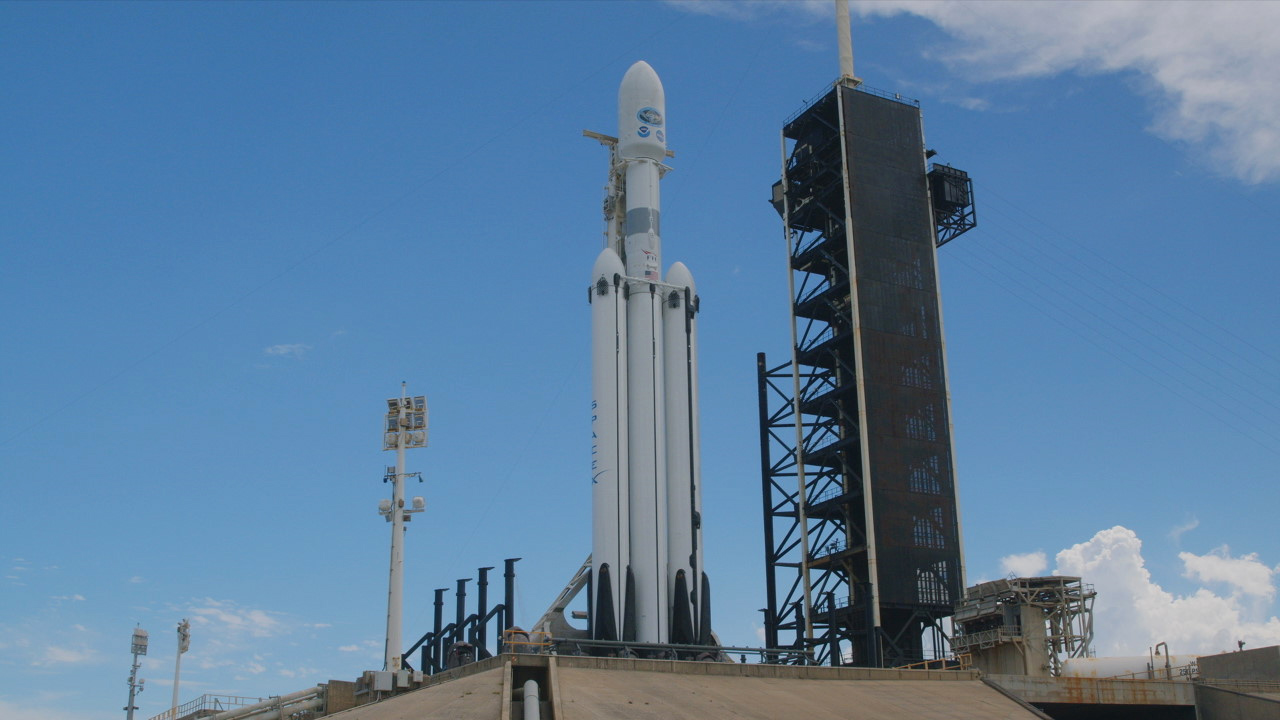
NASA’s coverage is underway for launch of the NOAA (National Oceanic and Atmospheric Administration) GOES-U (Geostationary Operational Environmental Satellite U) mission.
NASA and SpaceX are targeting a two-hour launch window opening at 5:16 p.m. EDT. The weather satellite will launch on a SpaceX Falcon Heavy rocket from Launch Complex 39A at NASA’s Kennedy Space Center in Florida.
Launch weather officers with Cape Canaveral Space Force Station’s 45th Weather Squadron now predict a 60% chance of favorable weather conditions at the opening of the two-hour launch window, with chance of favorable conditions decreasing to 30% towards the latter part of the window.
The primary goal of GOES-U is to assist meteorologists with predicting, observing, and tracking hazardous weather events on Earth and in space. The GOES-U satellite is the final weather-observing and environmental monitoring satellite in NOAA’s GOES-R Series.
As the countdown continues, follow the GOES-U blog for mission milestones or watch NASA’s live coverage on NASA+, NASA Television, the NASA app, YouTube, and the agency’s website.
X: @NASA, @NASA_LSP, @NASAKennedy, @NOAASatellites, @NASAGoddard
Facebook: NASA, NASA LSP, NASA Kennedy, NOAA Satellites, NASA Goddard
Instagram: NASA, NASA Kennedy, NOAA Satellites
Key Countdown, Ascent, Landing Milestones for Today’s GOES-U Mission
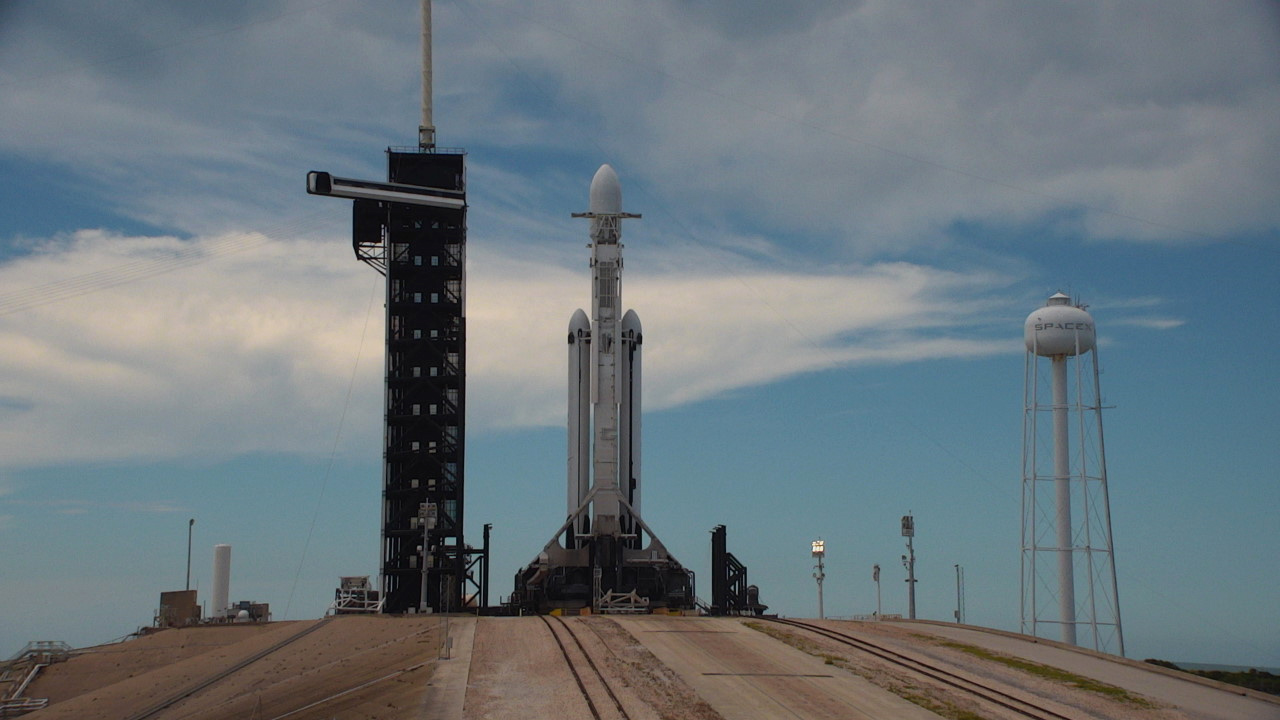
The schedule for today’s launch of NOAA’s (National Oceanic and Atmospheric Administration) GOES-U (Geostationary Operational Environmental Satellite U), the fourth and final weather-observing and environmental monitoring satellite in NOAA’s GOES-R Series, is now set.
NASA and SpaceX are targeting a two-hour launch window opening at 5:16 p.m. EDT. The satellite will launch on a SpaceX Falcon Heavy rocket from Launch Complex 39A at NASA’s Kennedy Space Center in Florida.
Read through milestones for today’s countdown, liftoff, ascent, and booster landing (all times are approximate and subject to change based on mission operations):
HR/MIN/SEC EVENT
– 00:53:00 SpaceX Launch Director verifies go for propellant load
– 00:50:00 1st stage RP-1 (rocket grade kerosene) loading begins
– 00:45:00 1st stage LOX (liquid oxygen) loading begins
– 00:35:00 2nd stage RP-1 (rocket grade kerosene) loading begins
– 00:18:30 2nd stage LOX loading begins
– 00:07:00 Falcon Heavy begins engine chill
– 00:00:59 Flight computer commanded to begin final pre-launch checks
– 00:00:45 SpaceX Launch Director verifies go for launch
– 00:00:20 Propellant tanks pressurize for flight
– 00:00:06 Engine controller commands engine ignition sequence to start
00:00:00 Falcon Heavy liftoff
00:01:11 Max Q (moment of peak mechanical stress on the rocket)
00:02:25 Side boosters engine cutoff (BECO)
00:02:28 Side boosters separate
00:02:44 Side boosters boostback burns begin
00:03:53 Side boosters boostback burns end
00:03:56 1st stage main engine cutoff (MECO)
00:03:59 1st and 2nd stages separate
00:04:06 2nd stage engine starts (SES-1)
00:04:24 Fairing separation
00:06:36 Side boosters entry burns start
00:06:51 Side boosters entry burns end
00:07:53 Side boosters landing burns start
00:08:11 Side boosters landing
00:08:23 2nd stage engine cutoff (SECO-1)
00:26:19 2nd stage engine starts (SES-2)
00:27:46 2nd stage engine cutoff (SECO-2)
04:21:18 2nd stage engine starts (SES-3)
04:21:51 2nd stage engine cutoff (SECO-3)
04:30:02 GOES-U deploys
NASA will provide live launch coverage beginning at 4:15 p.m. EDT on NASA+, NASA Television, the NASA app, YouTube, and the agency’s website. Learn how to stream NASA TV through a variety of platforms including social media.
Continue checking NASA’s GOES blog for additional mission milestones, or join the conversation and get updates on social media by following these accounts:
X: @NASA, @NASA_LSP, @NASAKennedy, @NOAASatellites, @NASAGoddard
Facebook: NASA, NASA LSP, NASA Kennedy, NOAA Satellites, NASA Goddard
Instagram: NASA, NASA Kennedy, NOAA Satellites
Meet the GOES-U Weather Satellite, Science Instruments
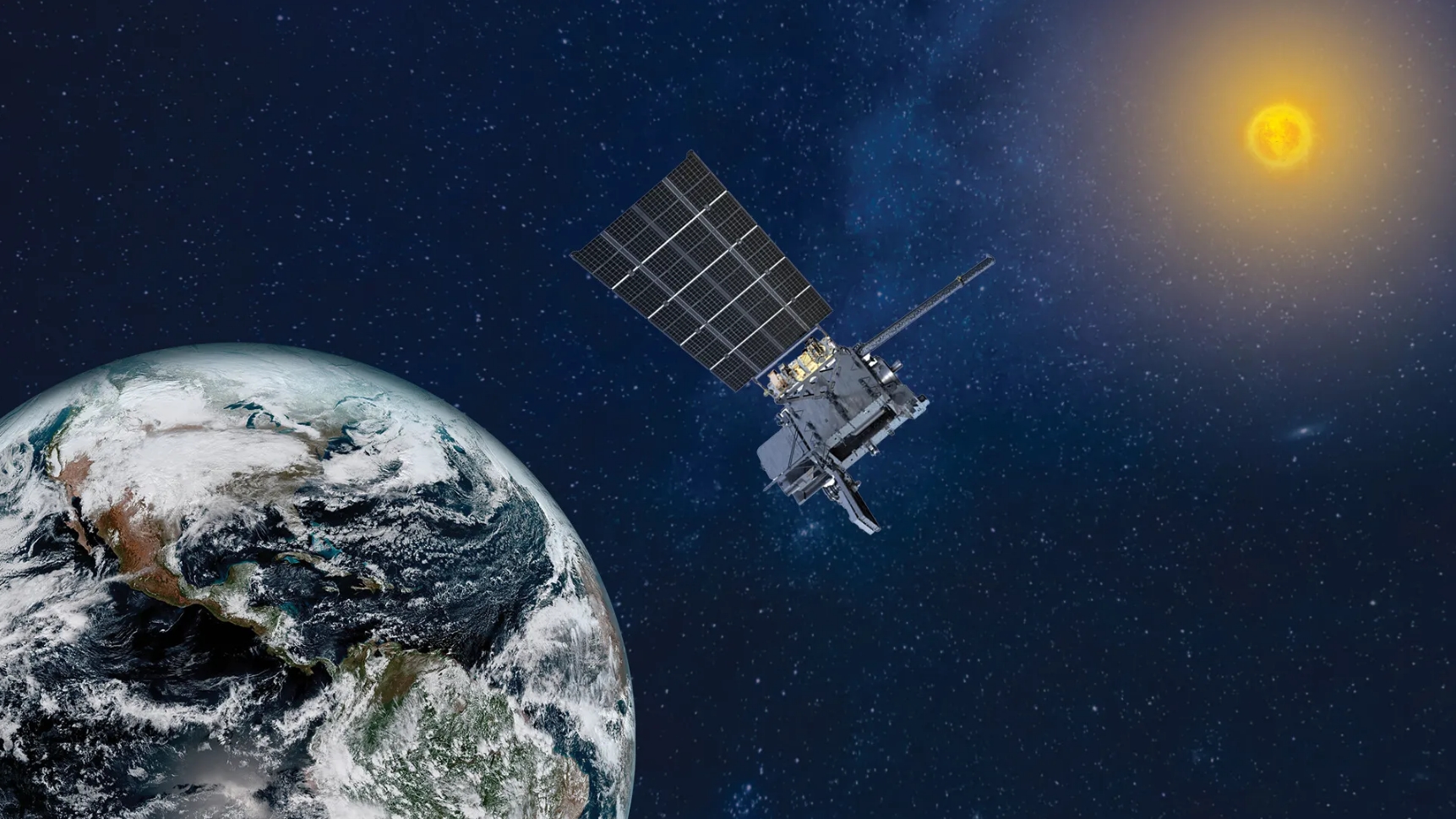
NASA and SpaceX teams continue to work toward a 5:16 p.m. EDT liftoff of NOAA’s (National Oceanic and Atmospheric Administration) GOES-U (Geostationary Operational Environmental Satellite U) on a Falcon Heavy rocket from Launch Complex 39A at NASA’s Kennedy Space Center in Florida.
Read a few facts about the spacecraft and its science instruments:
- The GOES-U spacecraft stands about 20 feet tall and, when fully fueled, weighs in at nearly 11,000 pounds.
- Once launched, GOES-U will complete a nearly two-week journey to its geostationary orbit, about 22,236 miles above the equator.
- The GOES-U satellite is the last of the GOES-R Series satellites, which are planned to operate into the mid-2030s.
- Onboard GOES-U is a suite of seven instruments for collecting advanced imagery and atmospheric measurements, providing real-time mapping of lightning activity, and detecting the approach of space weather hazards.
- Also flying aboard, a first-ever compact coronagraph that will observe the Sun’s outermost layer, called the corona, for large explosions of plasma that could produce geomagnetic solar storms.
- Meteorologists rely on data from NOAA’s satellites to issue accurate, timely, and reliable watches and warnings for local weather events that affect public safety like thunderstorms, hurricanes, wildfires, and solar storms.
- The GOES-U satellite is the ninth overall mission NASA’s Launch Service Program will fly on a SpaceX rocket.
Continue checking NASA’s GOES blog for additional mission milestones, or join the conversation and get updates on social media by following these accounts:
X: @NASA, @NASA_LSP, @NASAKennedy, @NOAASatellites, @NASAGoddard
Facebook: NASA, NASA LSP, NASA Kennedy, NOAA Satellites, NASA Goddard
Instagram: NASA, NASA Kennedy, NOAA Satellites
GOES-U Weather Satellite Mission Overview
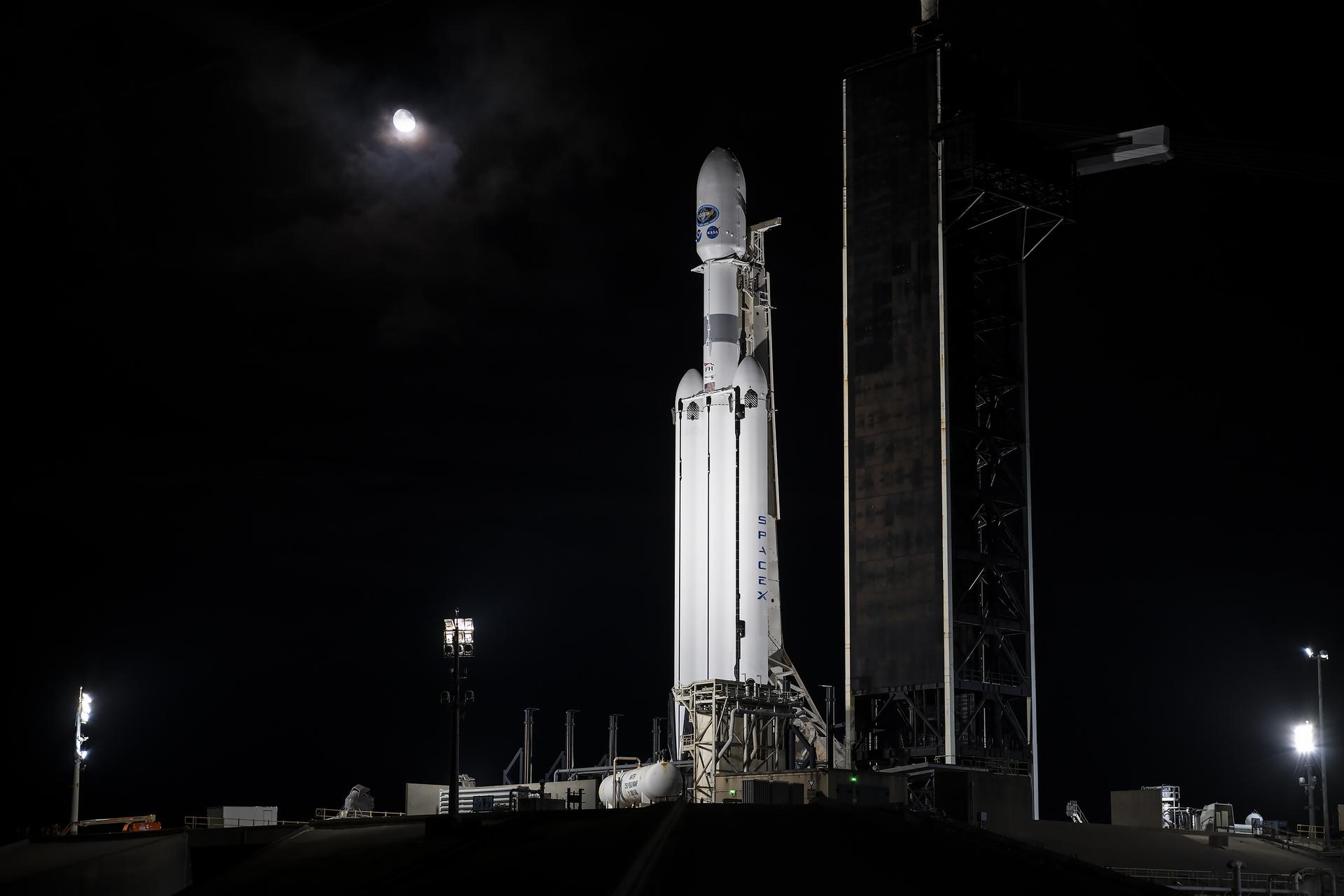
NASA and NOAA (National Oceanic and Atmospheric Administration) have closely collaborated, dating back to 1975, to successfully deploy more than 60 weather satellites. The NOAA GOES-U (Geostationary Operational Environmental Satellite U) mission is the culmination of a historic weather-observing and environmental monitoring system.
The NOAA GOES-R Series, which consists of three satellites – GOES-R, S, and T, soon to be joined by GOES-U – is the only system that provides persistent coverage of the Western Hemisphere.
Data from the environmental monitoring satellite constellation enables forecasters to predict, observe, and track local weather events on Earth and in space that affect public safety like thunderstorms, hurricanes, wildfires, and solar storms.
The GOES-R Series Program is overseen by NOAA through an integrated NOAA-NASA office, managing the ground system, operating the satellites, and distributing their data to users worldwide.
NASA’s Launch Services Program, based at the agency’s Kennedy Space Center in Florida, manages the launch service for the GOES-U mission. NASA’s Goddard Space Flight Center in Greenbelt, Maryland oversees the acquisition of the spacecraft and instruments. Lockheed Martin designs, builds, and tests the GOES-R series satellites. L3Harris Technologies provides the primary instrument, the Advanced Baseline Imager, along with the ground system, which includes the antenna system for data reception.
Continue checking NASA’s GOES blog for additional mission milestones, or join the conversation and get updates on social media by following these accounts:
X: @NASA, @NASA_LSP, @NASAKennedy, @NOAASatellites, @NASAGoddard
Facebook: NASA, NASA LSP, NASA Kennedy, NOAA Satellites, NASA Goddard
Instagram: NASA, NASA Kennedy, NOAA Satellites
NASA, NOAA GOES-U Mission Set for Launch, Weather 30% Favorable
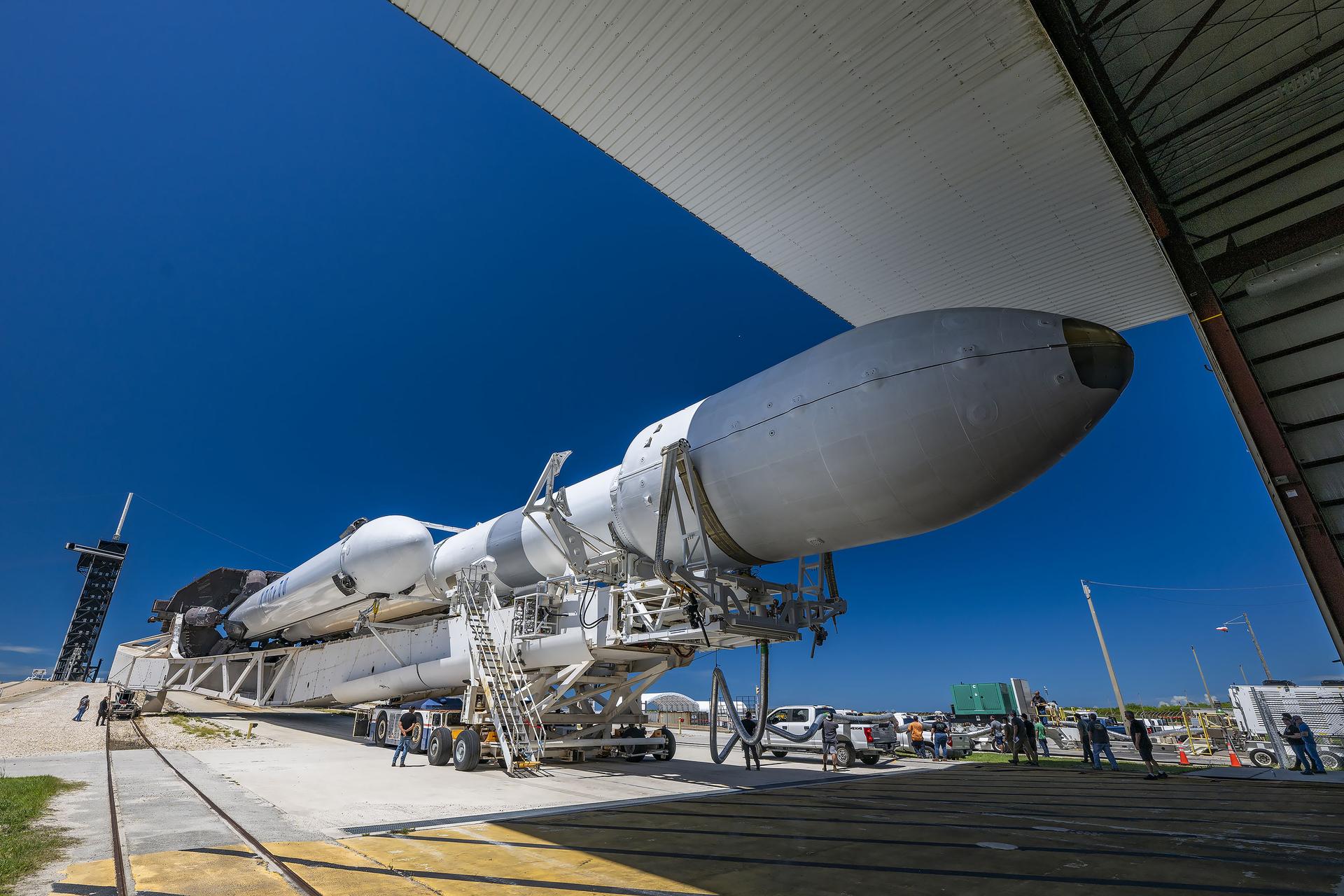
It’s launch day! NASA and SpaceX are targeting a two-hour launch window opening at 5:16 p.m. EDT for the NOAA (National Oceanic and Atmospheric Administration) GOES-U (Geostationary Operational Environmental Satellite U) mission. The weather satellite will launch on a SpaceX Falcon Heavy rocket from Launch Complex 39A at NASA’s Kennedy Space Center in Florida.
Launch weather officers with Cape Canaveral Space Force Station’s 45th Weather Squadron predict a 30% chance of favorable weather conditions. The team will continue monitoring weather conditions throughout the launch.
NASA will provide live launch coverage beginning at 4:15 p.m. EDT on NASA+, NASA Television, the NASA app, YouTube, and the agency’s website. Learn how to stream NASA TV through a variety of platforms including social media.
Continue checking NASA’s GOES blog for additional mission milestones, or join the conversation and get updates on social media by following these accounts:
X: @NASA, @NASA_LSP, @NASAKennedy, @NOAASatellites, @NASAGoddard
Facebook: NASA, NASA LSP, NASA Kennedy, NOAA Satellites, NASA Goddard
Instagram: NASA, NASA Kennedy, NOAA Satellites
‘Go’ for Launch: GOES-U Launch Readiness Review Concludes
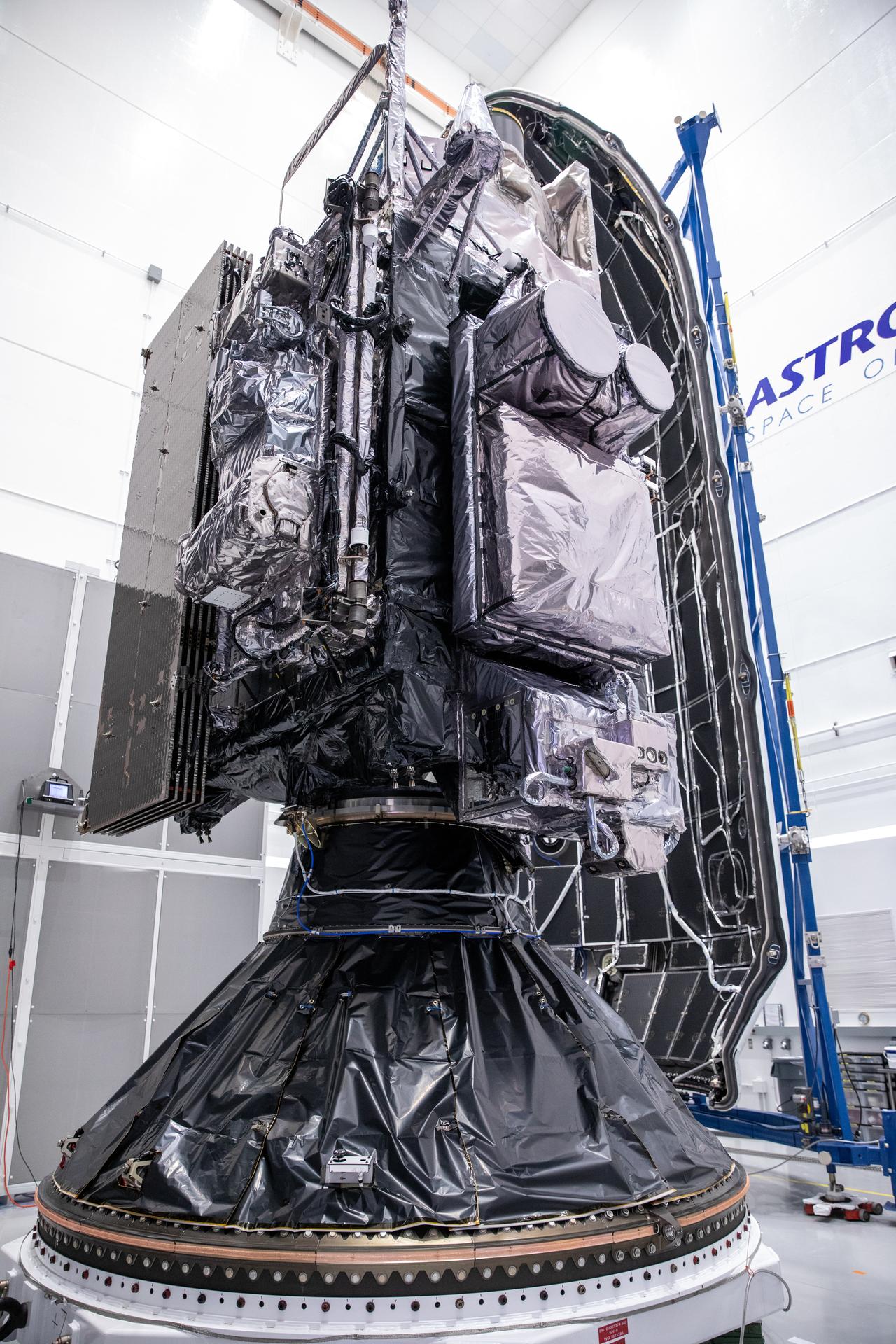
NASA and SpaceX gave the ‘go’ for launch of the GOES-U (Geostationary Operational Environmental Satellite U) mission following a successful readiness review at the agency’s Kennedy Space Center in Florida.
NASA and SpaceX are targeting a two-hour launch window opening at 5:16 p.m. EDT, Tuesday, June 25. The mission will launch on a SpaceX Falcon Heavy rocket from Launch Complex 39A at NASA’s Kennedy Space Center in Florida.
Weather officers with Cape Canaveral Space Force Station’s 45th Weather Squadron predict a 30% chance of favorable conditions. The primary concerns are at launch are Cumulus Cloud Rule, Anvil Cloud Rules, and Surface Electric Fields Rule.
Continue checking NASA’s GOES blog for additional mission milestones, or join the conversation and get updates on social media by following these accounts:
X: @NASA, @NASA_LSP, @NASAKennedy, @NOAASatellites, @NASAGoddard
Facebook: NASA, NASA LSP, NASA Kennedy, NOAA Satellites, NASA Goddard
Instagram: NASA, NASA Kennedy, NOAA Satellites
Watch GOES-U Science Briefing, Prelaunch News Conference

NASA will provide coverage of prelaunch activities for the NOAA’s (National Oceanic and Atmospheric Administration) GOES-U (Geostationary Operational Environmental Satellite U) mission.
NASA and NOAA officials will provide a mission overview during a science briefing at 11 a.m. EDT, Monday, June 24. Coverage of the briefing will stream live on NASA+, NASA Television media channel, the NASA app, YouTube, and the agency’s website. Learn how to stream NASA TV through a variety of platforms including social media.
Participants include:
- Charles Webb, deputy director, Joint Agency Satellite Division, NASA
- Ken Graham, director, NOAA’s National Weather Service
- Dan Lindsey, chief scientist, GOES-R Program, NOAA
- Elsayed Talaat, director, NOAA’s Office of Space Weather Observations
- Chris Wood, NOAA Hurricane Hunter pilot
NASA also will host a prelaunch news conference at 5 p.m. following the briefing. Coverage of the news conference will stream live on NASA+, NASA Television, the NASA app, YouTube, and the agency’s website.
Participants include:
- Denton Gibson, launch director, Launch Services Program, NASA
- Steve Volz, assistant administrator, NOAA’s Satellite and Information Service
- Pam Sullivan, director, GOES-R Program, NOAA
- John Gagosian, director, Joint Agency Satellite Division
- Julianna Scheiman, director, NASA Science Missions, SpaceX
- Brian Cizek, launch weather officer, 45th Weather Squadron, U.S. Space Force
GOES-U, the fourth and final weather-observing and environmental monitoring satellite in NOAA’s GOES-R Series, is scheduled to launch on a SpaceX Falcon Heavy rocket from Launch Complex 39A at NASA’s Kennedy Space Center in Florida. The two-hour launch window opens at 5:16 p.m., Tuesday, June 25.
Continue checking NASA’s GOES blog for additional mission milestones, or join the conversation and get updates on social media by following these accounts:
X: @NASA, @NASA_LSP, @NASAKennedy, @NOAASatellites, @NASAGoddard
Facebook: NASA, NASA LSP, NASA Kennedy, NOAA Satellites, NASA Goddard
Instagram: NASA, NASA Kennedy, NOAA Satellites
NASA Completes Flight Readiness Review for GOES-U Mission

NASA, NOAA (National Oceanic and Atmospheric Administration), SpaceX, and GOES-U (Geostationary Operational Environmental Satellite-U) mission managers met on June 20 to conduct a Flight Readiness Review at NASA’S Kennedy Space Center in Florida. During the review, teams provided an update on the mission status and certified the readiness to proceed with final launch preparation activities.
Teams will connect the weather satellite to a SpaceX Falcon Heavy rocket as one of the final preparations for launch. Once the satellite and rocket are fully integrated, SpaceX will roll the Falcon Heavy rocket carrying NOAA’s GOES-U satellite from the hangar to the launch pad.
NASA is targeting launch Tuesday, June 25, with the two-hour launch window opening at 5:16 p.m. EDT. The mission will lift off from Launch Complex 39A at the Florida spaceport. This will be the first GOES mission to launch on a Falcon Heavy, and the 10th Falcon Heavy mission for SpaceX.
On board GOES-U are seven instruments, including a new, operational Compact Coronagraph-1 instrument. As a part of NOAA’s Space Weather Follow On Program, the coronagraph will observe the Sun’s outermost layer, called the corona, for large explosions of plasma that could produce geomagnetic solar storms. These solar storms can impact satellites, crewed space missions, and Earth and space-based infrastructure.
The GOES-U satellite is the fourth and final in NOAA’s GOES-R series of advanced satellites that provide rapid, high-resolution imagery and atmospheric measurements of Earth’s Western Hemisphere, real-time mapping of lightning activity, and monitoring of solar activity and space weather.
To learn more about the GOES-U mission, visit:
https://science.nasa.gov/mission/goes/
Continue checking NASA’s GOES blog for additional mission updates, or join the conversation and get updates on social media by following these accounts:
X: @NASA, @NASA_LSP, @NASAKennedy, @NOAASatellites, @NASAGoddard
Facebook: NASA, NASA LSP, NASA Kennedy, NOAA Satellites, NASA Goddard
Instagram: NASA, NASA Kennedy, NOAA Satellites
Advanced Weather Satellite Moves Closer to Launch
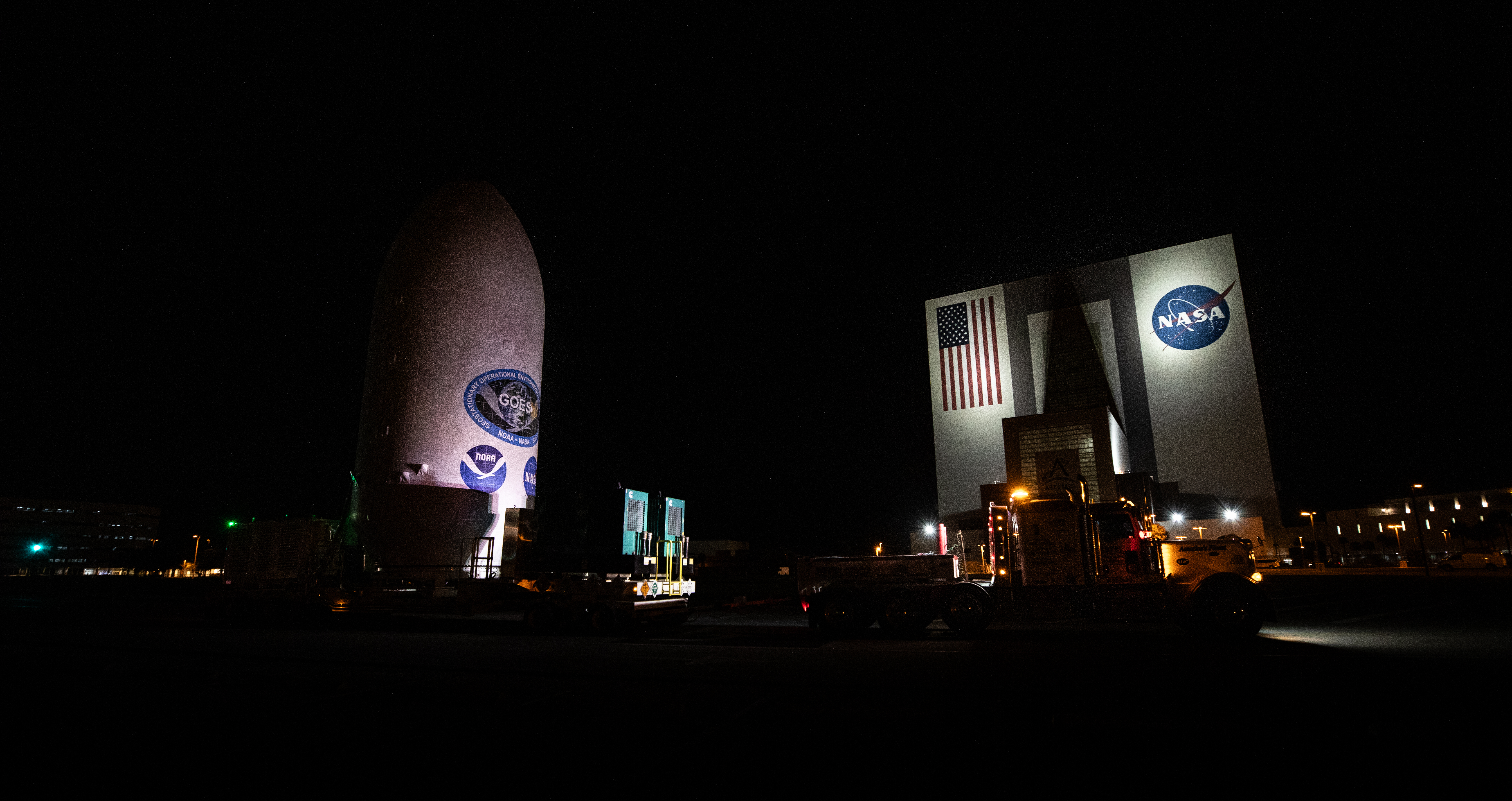
The Geostationary Operational Environmental Satellite U (GOES-U) has now passed several important milestones ahead of its upcoming launch aboard a SpaceX Falcon Heavy rocket from Launch Complex 39A at NASA’s Kennedy Space Center in Florida.
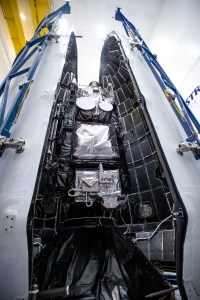
Technicians at Astrotech Space Operations facility in Titusville, Florida lifted the National Oceanic and Atmospheric Administration’s (NOAA) GOES-U satellite onto the payload adapter and the payload attach fitting on June 10, enabling GOES-U to securely attach to the top of its Falcon Heavy rocket.
This milestone follows recent fueling operations where teams loaded over 5,000 pounds of hypergolic propellant and oxidizer into the satellite, which will be used to provide it with thrust in orbit. The GOES-U satellite now weighs a total of 10,956 pounds.
Teams next encapsulated the 20-foot-tall satellite inside two payload fairing halves in preparation for connecting it to the rocket on June 13.
During the ascent phase of the launch, the fairing halves will protect GOES-U from aerodynamic pressure and heating. Once GOES-U no longer requires this protection, approximately four minutes after liftoff, the halves will be jettisoned and return to Earth, where SpaceX crews will recover them for use on future missions.
After encapsulation, workers transported the spacecraft from Astrotech’s facility to NASA Kennedy and SpaceX’s hangar at the spaceport’s Launch Complex 39A, on June 15.
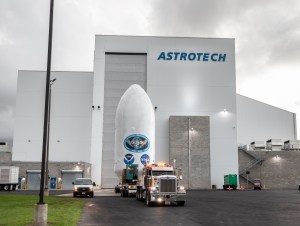
The next mission milestone includes connecting the encapsulated GOES-U to the SpaceX Falcon Heavy rocket ahead of rolling the stack out to the launch pad.
NASA is targeting a two-hour window opening at 5:16 p.m. EDT on June 25, for the launch of GOES-U aboard a SpaceX Falcon Heavy rocket from Launch Complex 39A at NASA Kennedy. Following launch, the spacecraft will complete a nearly three-week journey to its destination in geostationary orbit 22,236 miles above the equator, allowing the satellites to continually view the Western Hemisphere.
As the fourth and final satellite in NOAA’s GOES-R Series, GOES-U will enhance meteorologists’ ability to provide advanced weather forecasting and warning capabilities. GOES-U also will improve detection and monitoring of space weather hazards using a new compact coronagraph instrument.
NASA’s Launch Services Program, based at Kennedy, manages the launch service for the GOES-U mission. NASA’s Goddard Space Flight Center in Greenbelt, Maryland oversees the acquisition of the spacecraft and instruments. Lockheed Martin designs, builds, and tests the GOES-R series satellites. L3Harris Technologies provides the primary instrument, the Advanced Baseline Imager, along with the ground system, which includes the antenna system for data reception.
Continue checking NASA’s GOES blog for additional mission updates, or join the conversation and get updates on social media by following these accounts:
X: @NASA, @NASA_LSP, @NASAKennedy, @NOAASatellites, @NASAGoddard
Facebook: NASA, NASA LSP, NASA Kennedy, NOAA Satellites, NASA Goddard
Instagram: NASA, NASA Kennedy, NOAA Satellites
